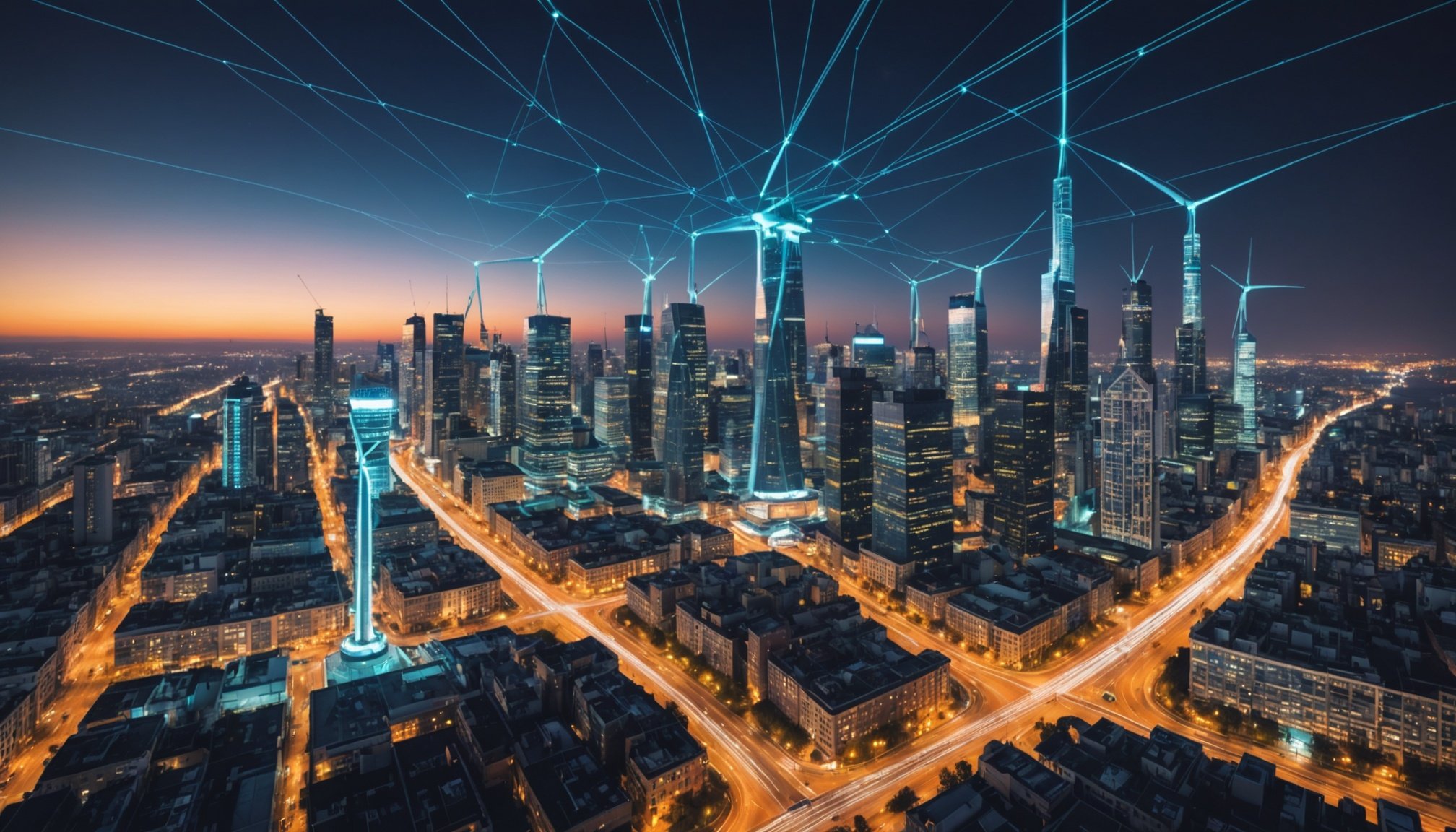Understanding AI’s Role in Energy Distribution
In today’s world, AI in energy distribution is not just a concept but a crucial innovation for optimizing energy flow. By analyzing vast amounts of data swiftly, AI technologies provide smart solutions for energy management, thereby enhancing the efficiency of distribution systems.
AI’s prowess in real-time monitoring allows for the effective management of smart cities. Take, for instance, the use of predictive analytics in energy grids, which empowers utilities to anticipate demand fluctuations and respond accordingly. This system not only prevents energy wastage but also ensures the supply meets demand seamlessly.
In the same genre : Enhance field productivity with a cmms mobile application
Moreover, in smart grids, AI applications facilitate the integration of renewable energy sources. By adjusting and controlling distribution with precision, AI ensures a steady and reliable energy supply. This is pivotal, considering the growing reliance on renewable energy to power smart cities.
Another advantage of AI in energy management is its ability to detect faults within the grid immediately. With its predictive capabilities, it can foresee potential failures and recommend preventive measures, saving cost and reducing downtime. This represents a significant leap towards a more sustainable and efficient energy ecosystem.
Have you seen this : Maximize efficiency with dynamic distribution software
Case Studies of Successful AI Integration
Exploring AI case studies, we delve into the transformative role of technology. A prominent example is a smart city that implemented AI for energy distribution. Through smart grid technology, this city managed to significantly enhance its energy efficiency.
Before the integration of AI, the city faced challenges with inconsistent energy supply and excessive consumption levels. By implementing AI algorithms, they could monitor and predict energy consumption patterns. This led to optimized energy distribution and reduced waste, marking a major improvement in efficiency.
Data from the city’s energy reports show a noticeable drop in consumption post-AI integration. AI-driven insights enabled the city to tailor energy supply according to real-time demand, boosting sustainability. With sensors and predictive analytics, energy distribution became not only more efficient but also eco-friendly.
Comparing energy consumption in various city sizes shows that larger cities benefit immensely from AI integration. Lessons from these case studies highlight that, while initial investment and infrastructure changes are necessary, the long-term benefits in energy savings make AI a crucial component for urban development. This proves AI’s potential in promoting sustainability across diverse cityscapes.
Benefits of AI in Energy Distribution
Artificial Intelligence (AI) is revolutionising the way energy is distributed, bringing significant benefits to both the environment and the economy. Notably, AI plays a key role in enhancing energy efficiency and reducing waste. By predicting demand patterns and optimising energy flow, AI helps to minimise excess production and distribution losses, ensuring sustainable energy solutions.
AI’s contribution to sustainable energy goals is profound. Through smart grid technologies, it integrates renewable energy sources more effectively. AI systems can forecast weather conditions to optimise solar and wind energy usage, ensuring a higher reliance on clean energy. This adaptation is crucial in meeting environmental targets and preserving natural resources.
From an economic perspective, the benefits of AI extend to municipalities and residents. By streamlining operations, municipalities can reduce operational costs associated with energy distribution. This leads to lower energy bills for residents and increased resources for community development projects. AI-driven systems also enable faster responses to outages, enhancing the reliability of energy supply.
Overall, the integration of AI in energy distribution channels propels the industry towards greater efficiency improvements and resource sustainability. Its ability to predict, adapt, and optimise makes it an invaluable tool for achieving both immediate and long-term energy goals.
Challenges in Implementing AI Solutions
Implementing AI solutions presents significant challenges, often stemming from technical and financial hurdles. Initially, the integration of AI into industries like smart grids confronts compatibility issues. Systems already in place might not easily align with AI technologies requiring costly upgrades or complete overhauls.
Additionally, potential data privacy and cybersecurity concerns are pressing issues. AI’s reliance on vast datasets raises questions about the protection of sensitive information. Ensuring compliance with stringent data protection regulations is non-negotiable, yet achieving it can be complex and resource-intensive.
Technical and Financial Hurdles
Technical implementation barriers often result from a skill gap within organizations. Deploying AI necessitates skilled personnel able to manage sophisticated algorithms and handle intricate datasets. This skill demand translates into increased operational costs, challenging for businesses unprepared for such financial commitment.
Compatibility and cybersecurity concerns can also entail financial implications. Upgrading systems or enhancing cybersecurity requires additional investment, further straining company resources.
Compatibility Concerns
Existing systems may not seamlessly integrate with AI solutions, creating obstacles to smooth deployment. Compatibility challenges require a strategic approach, including investing in adaptable technologies that can merge seamlessly with current infrastructure. Understanding these barriers and preparing accordingly can mitigate potential setbacks, fostering successful AI implementation.
Emerging Technologies in Energy Management
In today’s rapidly evolving energy landscape, emerging technologies play a pivotal role in shaping the future of energy systems. Smart grid innovations are at the forefront, offering advanced solutions for effective energy distribution. These innovations include a blend of AI and machine learning technologies, working in tandem to optimise energy flows and predict demand patterns. Such systems are crucial in ensuring that energy distribution is both efficient and sustainable.
The Internet of Things (IoT) has a profound impact on smart grids, creating connected networks that allow for real-time monitoring and control of energy systems. By integrating IoT devices, smart grids can collect data from various sources, enabling more precise adjustments and reducing energy waste. This connectivity contributes significantly to the resilience and reliability of energy networks.
Looking ahead, the trend of digitalisation in energy distribution technologies is set to continue. With advancements in blockchain for secure energy transactions and distributed energy resources (DER), future energy systems might incorporate a decentralised model. This approach not only enhances transparency but also allows for localised energy production and consumption, which is key in achieving eco-friendly goals and catering to the increasing global demand for energy.
Policy Implications for AI in Smart Cities
In the realm of smart city governance, government policies play a crucial role in facilitating AI adoption, especially for energy management. Establishing clear AI regulations is essential for ensuring that the integration of AI technologies aligns with broader sustainability goals, such as reducing carbon emissions and enhancing energy efficiency.
Regulatory frameworks regarding data usage must be robust and transparent, as data is pivotal in creating smart, efficient urban environments. Effective frameworks should address privacy concerns while allowing data to drive innovation. This balance is vital for earning public trust and encouraging the adoption of AI systems within cities.
Collaborations between the public and private sectors are fundamental to the successful implementation of AI in smart cities. Public agencies can provide the necessary governance frameworks, while private companies bring technological advancements and investments. Together, they can work on projects that manage energy supplies more effectively, optimize traffic flows, or enhance public safety through AI-driven solutions.
By leveraging the most advanced regulatory frameworks and fostering collaborations, cities can harness AI’s potential. This approach supports not only current urban challenges but also paves the way for a more sustainable future.











